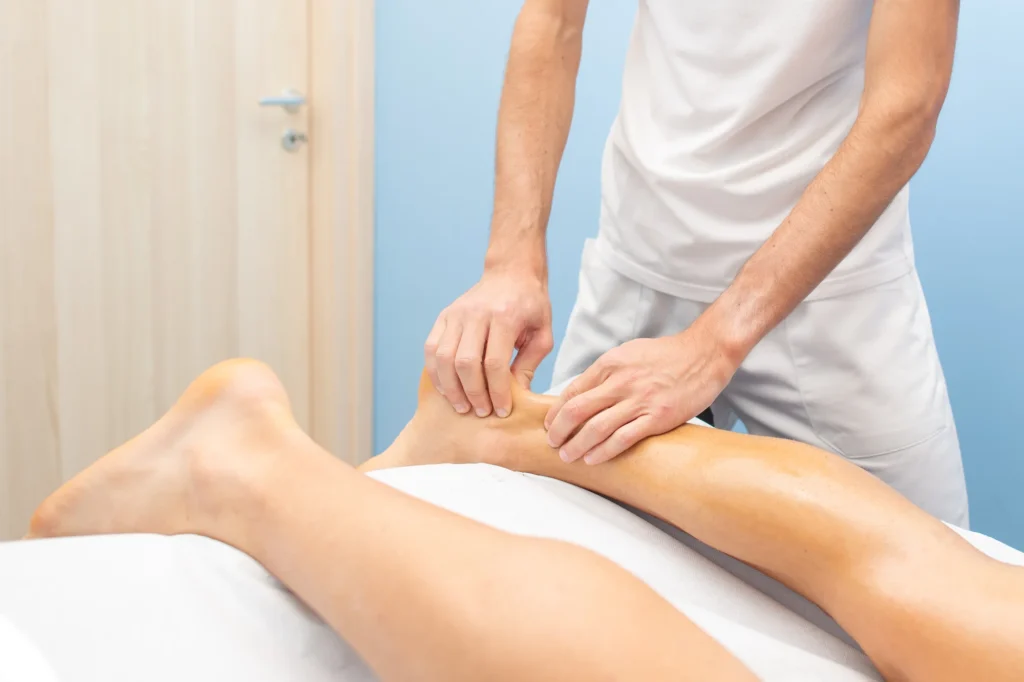Achilles Tendinopathy

Achilles Tendinopathy
Achilles tendon, the strongest tendon in the body, is often affected by active and sporty individuals. Unfortunately, it can become diseased, causing significant discomfort and impeding everyday mobility, which can greatly impact quality of life. In fact, endurance runners have a 52% cumulative risk of developing a condition known as Achilles tendinopathy during their lifetime.
There are two types of Achilles tendinopathy, each with their own presentation and treatment:
- Non-insertional or midportion tendinopathy affects the tendon itself and often responds well to a structured, robust program of stretching exercises that need to be done over several weeks.
- Insertional tendinopathy occurs where the tendon connects to the heel bone, called the calcaneum. It typically presents as a painful bony lump at the back of the heel, causing significant pain and making it uncomfortable to wear shoes.
Treatment for insertional tendinopathy often requires surgery. The traditional open operation involves a large skin incision to remove the diseased tendon and offending bone prominence, and then reattaching the tendon. While this procedure can provide pain relief, it carries risks. Recovery can take well over a year, and there is also a risk of skin breakdown, which can be challenging to treat.
Fortunately, there is an innovative arthroscopic technique available for insertional Achilles tendinopathy. This procedure involves resecting the bony lump through two small incisions in the skin at the back of the heel. It allows for quicker recovery and minimal disruption to the soft tissues. However, this sophisticated surgical method is only performed by a select few surgeons in the UK.
I am the only surgeon in our region who routinely performs this procedure for insertional Achilles tendinopathy, and the feedback I have received has been excellent.
I look forward to discussing your Achilles tendon problems with you and offering appropriate treatment.







